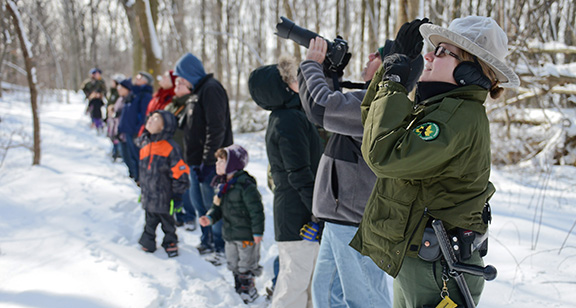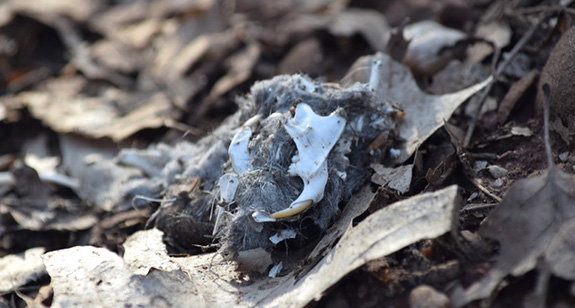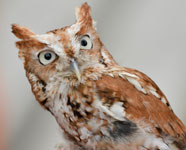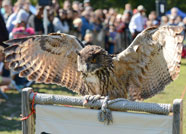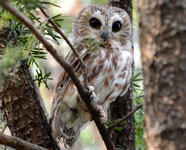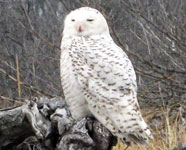Owls in New York City's Parks
Our parks are the perfect places to spot owls that live in New York City. The winter is the best time of the year to see owls because the trees are bare—making it easier to see them—and owls breed in the winter. You can spot them high up in our trees during the day or hunting around the parks when it's darker out. Here’s a look at some of the owls that call NYC's parks home.
Join an Owl Prowl
During the winter, our Urban Park Rangers host birding events in search of owls in our parks.
Exploring What Owls Eat
We can learn a lot about what owls love to eat by looking at owl pellets found on the forest floor.
* Click on any image to view larger
Barn Owls
Barn owls only come out at night, and usually live in old barns or abandoned structures. They are known for their ghostly appearance and for being really good silent predators—able to hunt in very dark areas and scope out sounds very well. Barn owls have long legs, dark eyes, spots on their plumage, heart-shaped faces, and long beaks. They hunt for rodents in large, open grassland areas like farms, meadows, and marshes. Barn owls are extremely rare sights in most New York City parks, but there have been sightings over the years in Pelham Bay, the New York Botanical Garden, and Floyd Bennett Field. Their calls sound like a harsh, raspy scream.
Barred Owls
Barred owls have dark barred stripes across white plumage, dark eyes, and round heads. They sleep high up in eastern white pine trees in Central Park, Inwood Hill Park, and Pelham Bay Park. When they vocalize, they sound like they are shouting “Who cooks for you?” or “Who cooks for you all”. At sundown, barred owls fly out of their roost to hunt. They prey on rodents and other small mammals, and sometimes go fishing for food in wetland areas. It’s cousin, the great-horned owl, is its larger and more aggressive competitor. Barred owls usually try to avoid living near great-horned owls.
Eastern Screech Owls
Eastern screech owls are small owls with grey or rusty-red plumage, and short ear tufts. They do not screech, instead these tiny owls make a call that sounds like a horse's neigh or shrills.You can spot them in Central Park's woodland areas or Inwood Hill Park’s natural forest. They feed on large insects and small rodents.
Great-Horned Owls
Great-horned owls are large with long earlike tufts. These owls start nesting early in the year. They incubate in tree cavities in January and raise owlets in the dead of winter in Prospect Park, Inwood Hill Park, Alley Pond Park, and Pelham Bay Park. Great-horned owls are fierce nocturnal hunters that will actually prey on large raptors, including other owls and ospreys, and even skunks. When they vocalize, it sounds like “hoo h’hooo’s”.
Northern Saw-whet Owls
Northern saw-whet owls are the smallest and, some say, cutest owl species found in the northeast. They are only six to eight inches tall, with speckled brown plumage, and bright yellow and black eyes. Northern saw-whet owls roost in conifers in Central Park, Inwood Hill Park, and Pelham Bay Park, often sitting very still. They make a “too-too-too” sound.
Snowy Owls
Snowy owls are a crown jewel of the owl kingdom and challenging to find. These owls are large and white with black markings. While most owl species perch in trees, snowy owls tend to hang out in low-lying areas, usually on fences, dunes, and on the ground near shorelines. They hunt both in the day and night. Snowy owls migrate from the arctic tundra and have been seen on Rockaway Beach perched on sand dunes. They have low, raspy hoots and sometimes whistle and hiss.
